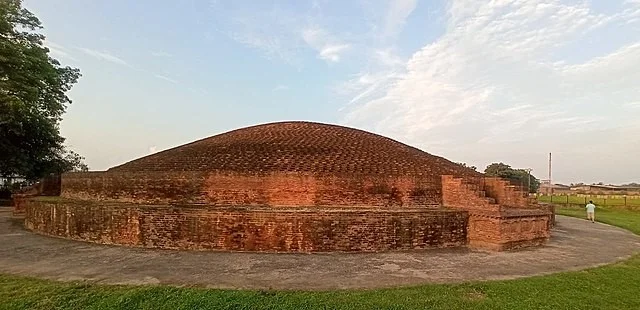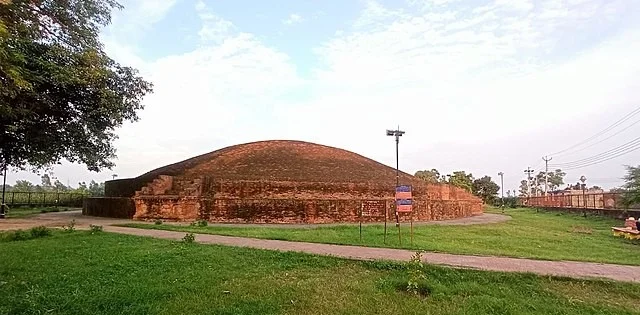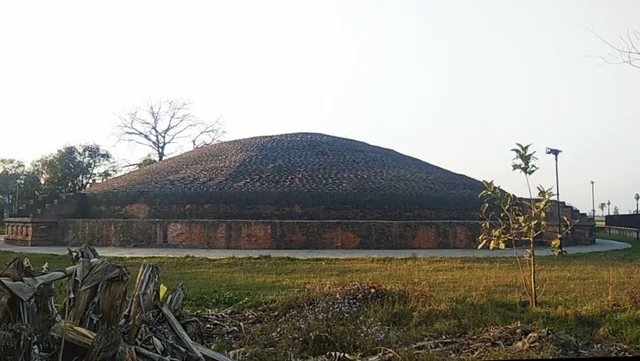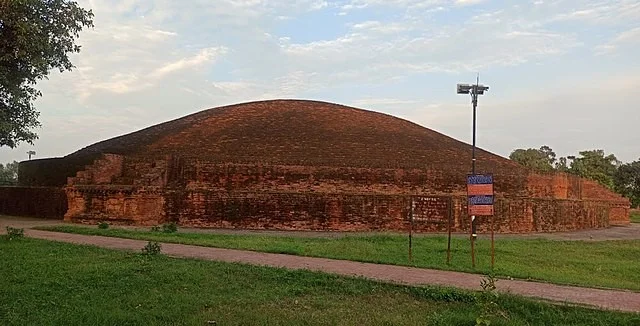The Chaneti Buddhist Stupa is an ancient structure located near Yamunanagar, Haryana, India. It dates back to the reign of Emperor Ashoka, around the 3rd century BC. This stupa is an important relic from the early period of Buddhism in India and offers significant insight into the architectural practices and religious traditions of the time.
Get your dose of History via Email
Location and Historical Context

The Chaneti Stupa is situated about 3 kilometers from the town of Jagadhri. Its proximity to Kurukshetra, a major pilgrimage site, indicates the area’s religious significance. This region was historically part of the Mauryan Empire, ruled by Ashoka, a key figure in spreading Buddhism throughout his realm.
Ashoka, after embracing Buddhism, played a pivotal role in establishing stupas across India. These stupas served as monuments for the preservation of Buddhist relics and were central to the spread of Buddhist philosophy. The Chaneti Stupa is considered one of the earliest examples of such structures.
Architectural Features

The Chaneti Stupa is a hemispherical brick structure. It originally had a solid core, likely designed to enshrine relics. Though erosion and neglect have caused damage over the centuries, its basic form remains intact. The stupa was likely topped with a harmika (a small platform) and a chhatra (a parasol-like structure), but these elements have not survived.
The design reflects early Buddhist architecture, emphasizing simplicity and functionality. Unlike later stupas, which became more elaborate, early stupas like Chaneti focused primarily on creating a space for meditation and reflection.
Archaeological Significance

The stupa has been the subject of archaeological interest for many years. It is a critical site for understanding the development of stupa architecture in northern India. Excavations have revealed the stupa’s layered construction, confirming that it was built in several phases, a common feature of stupas as they were often expanded over time.
Artifacts discovered around the site suggest that the stupa may have been part of a larger complex. However, further excavation is needed to fully understand its role in the broader Buddhist landscape of the region.
Preservation and Challenges
The Chaneti Stupa has faced many challenges over the centuries, including weathering, human intervention, and neglect. In recent years, there have been efforts by local authorities and heritage organizations to preserve the site. These efforts include clearing vegetation, stabilizing the structure, and raising awareness of its historical importance.
Despite these challenges, the stupa remains an important landmark. It is a reminder of the rich Buddhist heritage of northern India and continues to attract scholars and tourists alike.
Conclusion
The Chaneti Buddhist Stupa offers valuable insight into the early development of Buddhist architecture and the spread of Buddhism under Emperor Ashoka. Though it has suffered from time and neglect, its survival highlights the importance of preserving ancient structures. Ongoing conservation efforts are essential to ensure that this relic of India’s past remains a testament to its rich cultural history.
Source:

